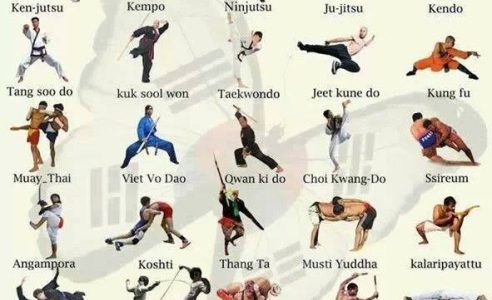Martial arts have a remarkable history that spans centuries and continents. You might discover it fascinating how ancient methods like Shuai Jiao and Kalaripayattu prepared for modern-day fight techniques. These disciplines not only emphasize physical skills yet likewise reflect the cultures that birthed them. As you explore their advancement, consider just how globalization has transformed these conventional forms into hybrid styles. What impacts do you think have formed today's martial arts landscape?
Ancient Martial arts: The Foundations of Combat
As you explore the globe of ancient martial arts, you'll uncover the rich structures that shaped combat techniques throughout cultures. Early methods focused on Self-Defense and survival, typically incorporating strikes, grappling, and weapons.
In old China, for example, techniques like Shuai Jiao stressed tosses and joint locks, while India's Kalaripayattu showcased dexterity and fluid activity. mouse click the next webpage created Kenjutsu, a polished swordsmanship that highlighted self-control and strategy.
These martial arts offered not just for fight but likewise as a means of personal development, instilling worths like regard and determination. The blending of these techniques gradually laid the groundwork for the diverse martial arts you see today, each reflecting the distinct approaches and requirements of its society.
The Cultural Influence on Martial Arts Development
While martial arts frequently show the sensible demands of a society, they likewise symbolize the cultural values and ideas of their origins. When you check out various martial arts, you'll observe exactly how they're influenced by faith, viewpoint, and social standards.
As an example, the emphasis on regard and self-control in Japanese martial arts comes from Zen Buddhism and samurai culture. In contrast, Brazilian Jiu-Jitsu promotes flexibility and method, formed by the demand for efficiency in a diverse, multicultural setting.
tai chi martial arts might find that the routines, uniforms, and training techniques show an area's history and identity. By recognizing these social impacts, you strengthen your gratitude of martial arts and their duty in shaping human experiences around the world.
Modern Adaptations and the Globalization of Martial arts
Martial arts have actually changed significantly in recent decades, adjusting to contemporary culture and worldwide influences. You'll discover that traditional forms have mixed with modern-day strategies, producing hybrid styles like MMA. These adaptations accommodate diverse target markets, making martial arts easily accessible and appealing worldwide.
With the surge of social media and digital systems, you can discover tutorials and competitions from all edges of the globe, breaking geographical obstacles. This globalization has actually brought about a common recognition for various disciplines, from Brazilian Jiu-Jitsu to Taekwondo.
As you engage with these arts, you'll understand they're not almost fight; they advertise health and fitness, self-control, and mental well-being.
Ultimately, modern adjustments have actually enriched the martial arts landscape, making it a dynamic and progressing practice.
Verdict
In exploring the history and evolution of martial arts, you reveal a remarkable blend of methods, cultures, and approaches. From old self-controls like Shuai Jiao and Kalaripayattu to the modern flexibility seen in mixed martial arts, martial arts show humanity's pursuit for Self-Defense and personal growth. As you engage with these practices, you not just obtain skills but additionally a much deeper gratitude for the varied customs that form our world today. So, continue your trip and welcome the art of fight!
